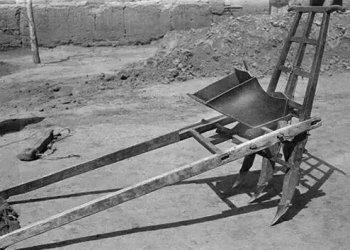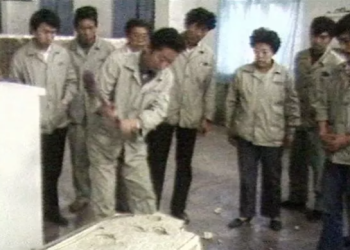Ten years ago, Chinese scientist Tu Youyou was awarded the Nobel Prize in Physiology or Medicine, achieving the milestone of a Chinese scientist receiving a Nobel Prize for the first time. This recognition was not only for her individual scientific contributions but also a historic tribute to the collective wisdom of Chinese scientists.
As the Nobel Prize committee stated, Artemisinin is “a gift from traditional Chinese medicine to the world.” Behind this gift lies countless failed experiments and perseverance, as well as selfless collaboration across regions and institutions.
In the mid-1960s, during the Vietnam War, malaria was rampant, and existing medications had developed severe resistance. Under the guidance of Chairman Mao Zedong and Premier Zhou Enlai, it was deemed an urgent task to “solve the problem of malaria affecting troops in tropical regions, severely impacting their combat effectiveness and military operations.” On May 23, 1967, the National Science and Technology Commission and the General Logistics Department convened a national malaria prevention and treatment drug research conference in Beijing, with over 60 scientific research units across the country involved. A unique research model was formed, known as the “523 Project,” which aimed to solve the malaria resistance problem in Southeast Asia and ensure the health of both military and civilian populations in southern China.

In the three-year research plan for the “523” project formulated in 1967, one of the key areas of focus was the “investigation and research of effective folk remedies and drugs for malaria prevention.” Among the drugs listed for focused research was Artemisia annua (sweet wormwood). In 1969, Gu Wenhai, a barefoot doctor from Gaoyou, Jiangsu, discovered a folk remedy for malaria in the book Bencao Tuichen. After personally testing the local “branch wormwood” and confirming its effectiveness in treating malaria, he contributed the formula. With the assistance of the local Artemisia annua malaria prevention group, a formula of “half a pound of Artemisia annua decoction” was developed and shown to be effective in treating malaria (mainly tertian malaria), marking an early practice of Artemisia annua’s therapeutic effect after the launch of the “523” project. In 1969, the “523” project team in Nanjing reported the folk remedy to the Ministry of Health, and experts from the Institute of Traditional Chinese Medicine and Herbal Medicine were dispatched to conduct field research, obtaining Artemisia annua samples and usage results. After extracting Artemisinin from the samples, experts such as Shen Lianci and Li Zelin went to Gaoyou to assist in refining various Chinese herbal preparations, including fresh Artemisia annua juice and decoctions. These simple Artemisia annua preparations were included in military medicines in 1978.

The discovery of Artemisinin was not accidental but was based on systematic review and scientific validation of Chinese medicine literature. In 1969, the Institute of Traditional Chinese Medicine’s research team, where Tu Youyou worked, joined the “523” project, with Tu Youyou serving as the team leader. In April of that year, the team completed the “Collection of Secret Malaria Remedies,” which included over 640 recipes. On page 15, Artemisia annua was listed with specific instructions for its use in malaria treatment (“5 to 10 grams to half a pound of Artemisia annua, crushed and taken as juice or boiled in water”). However, the team initially focused on pepper as a primary candidate and did not emphasize Artemisia annua. To avoid the inefficiencies and resource waste of traditional herb selection methods, team member Yu Yagang used statistical methods to analyze 808 malaria remedies, excluding the already known effective formulas, and identified frequently used ingredients such as Aconitum, Mume, Turtle Shell, and Artemisia annua. He made a key discovery by noting the “juice” method of Artemisia annua recorded in Zhouhou Beiji Fang from the Eastern Jin dynasty, which he documented. Although Yu Yagang was later reassigned to other duties, his innovative statistical approach and experimental methods laid the groundwork for future research.
In 1971, Tu Youyou reorganized the “523” project team at the Institute of Traditional Chinese Medicine. According to colleagues, Tu Youyou was known for her “dedication”—once she focused on a goal, she relentlessly pursued it until it was achieved. However, her initial attempts to re-screen Artemisia annua proved unsuccessful, as water decoctions were ineffective, and ethanol extracts were unstable. Tu Youyou keenly seized the clue from the Zhouhou Beiji Fang, which recommended “one handful of Artemisia annua, soak it in two liters of water, and squeeze out the juice.” She was the first to use ether as an extraction solvent. Ether’s moderate polarity and low boiling point allowed it to effectively extract lipophilic compounds while avoiding heat damage to active substances. In October of that year, the team’s ether extract of Artemisia annua showed a 100% inhibition rate in mouse malaria, a significant breakthrough in the “523” project, setting it apart as a potential anti-malarial drug.

In March 1972, this result was reported at a conference in Nanjing, providing clues for further research by other units. Tu Youyou’s contributions were not just in experimental design but also in her boldness. She and her team members, such as Lang Linfu, Yue Fengxian, and Zhang Guozhen, volunteered to be the first human test subjects for the crude Artemisia annua extract, verifying its safety for clinical use. This pivotal step from crude extract to pure crystal was a key moment in the development of Artemisinin.
The collaborative management of the “523” project facilitated cross-regional and cross-team cooperation. Local research units, upon learning of Artemisia annua’s effectiveness, quickly made critical progress. In 1973, a crystallized form of Huang Artemisinin was obtained by Luo Zeyuan’s team at the Yunnan Institute of Medicinal Herbs, laying the foundation for Professor Li Guoqiao’s team in Guangzhou to make clinical breakthroughs. In 1974, Li Guoqiao’s team used Huang Artemisinin to treat 18 malaria patients in Yunnan with 100% efficacy, especially against cerebral malaria, which had a remarkable rapid effect.

By 1978, 2,099 clinical trials of Artemisinin formulations were completed nationwide, including 588 cases of malignant malaria (141 of which were cerebral malaria), providing solid evidence for the global promotion of Artemisinin.
The study of Artemisinin’s structure and its implications for its anti-malarial function has been vital for the development of drugs. This discovery not only explained Artemisinin’s unique efficacy but also provided a theoretical foundation for the development of derivatives, such as Artesunate and Artemether. In the latter half of 1973, Tu Youyou’s team used sodium borohydride to reduce Artemisinin into its derivative, and through further collaboration, its molecular formula and absolute configuration were determined, leading to the development of dihydroartemisinin. These discoveries represent the hard work of thousands of researchers who have worked tirelessly under challenging conditions to bring Artemisinin and its derivatives to the world. For decades, Artemisinin-based treatments have saved millions of malaria patients worldwide. Looking back at this history, Tu Youyou’s outstanding contributions are worth remembering, and the unsung heroes of the “523” project also deserve recognition. Together, they created an indelible chapter in human history.











